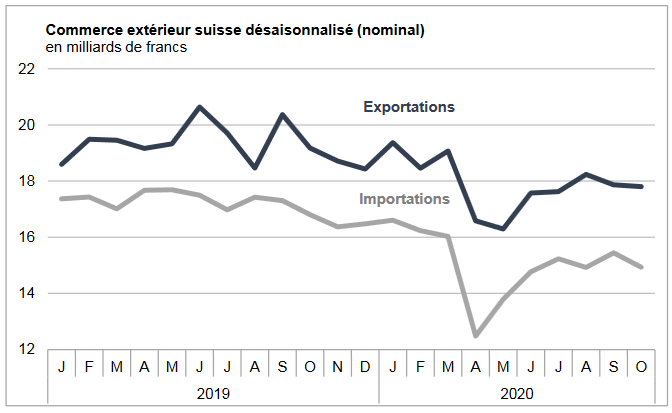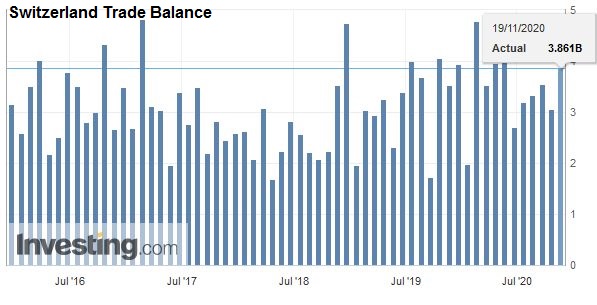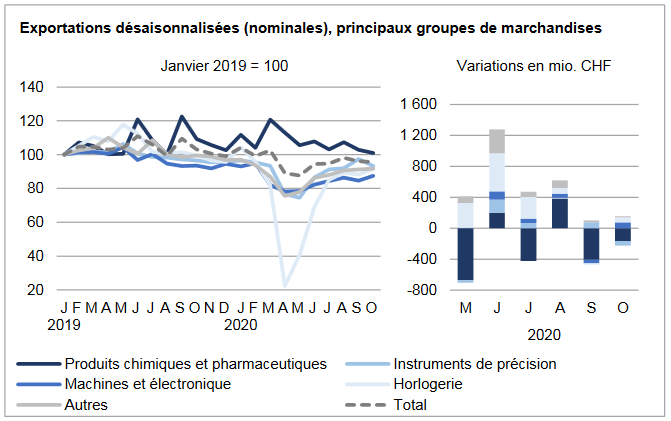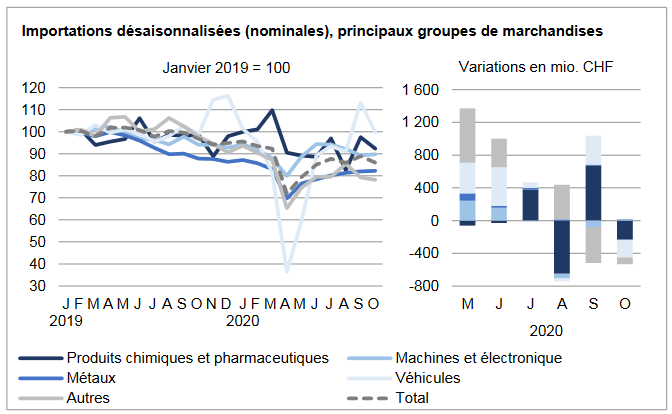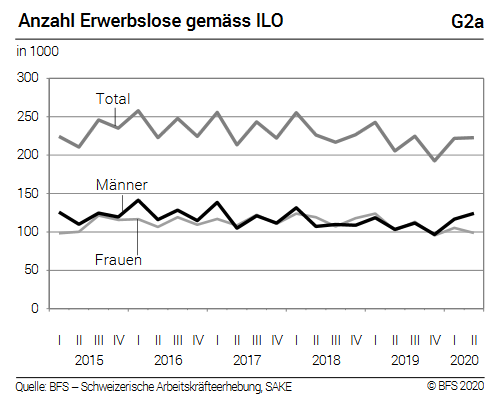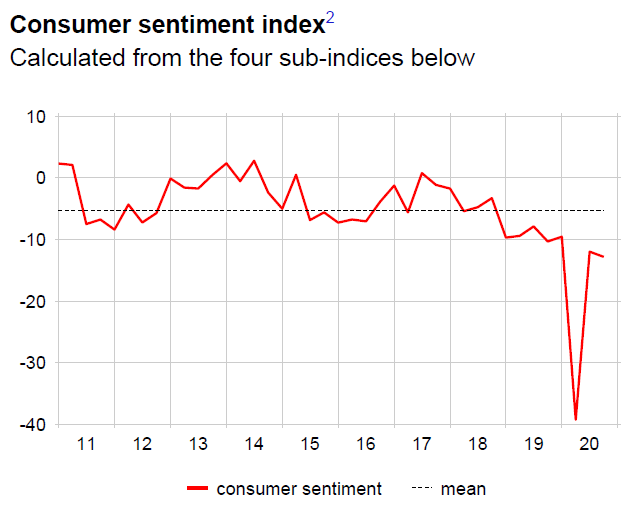We do not like Purchasing Power or Real Effective Exchange Rate (REER) as measurement for currencies. For us, the trade balance decides if a currency is overvalued. Only the trade balance can express productivity gains, while the REER assumes constant productivity in comparison to trade partners. Who has read Michael Pettis, knows that a rising trade surplus may also be caused by a higher savings rate while the trade partners decided to spend more. This is partially true. Recently Europeans started to increase their savings rate, while Americans reduced it. This has led to a rising trade and current surplus for the Europeans. But also to a massive Swiss trade surplus with the United States, that lifted Switzerland on the U.S. currency manipulation watch list. To
Topics:
George Dorgan considers the following as important: 2.) Trade Balance News Service Bunt [FR], 2) Swiss and European Macro, Featured, newsletter, Switzerland Exports, Switzerland Imports, Switzerland Trade Balance
This could be interesting, too:
Nachrichten Ticker - www.finanzen.ch writes Die Performance der Kryptowährungen in KW 9: Das hat sich bei Bitcoin, Ether & Co. getan
Nachrichten Ticker - www.finanzen.ch writes Wer verbirgt sich hinter der Ethereum-Technologie?
Martin Hartmann writes Eine Analyse nach den Lehren von Milton Friedman
Marc Chandler writes March 2025 Monthly
We do not like Purchasing Power or Real Effective Exchange Rate (REER) as measurement for currencies. For us, the trade balance decides if a currency is overvalued. Only the trade balance can express productivity gains, while the REER assumes constant productivity in comparison to trade partners.
Who has read Michael Pettis, knows that a rising trade surplus may also be caused by a higher savings rate while the trade partners decided to spend more. This is partially true. Recently Europeans started to increase their savings rate, while Americans reduced it. This has led to a rising trade and current surplus for the Europeans. But also to a massive Swiss trade surplus with the United States, that lifted Switzerland on the U.S. currency manipulation watch list.
To control the trade balance against this “savings effect”, economists may look at imports. When imports are rising at the same pace as GDP or consumption, then there is no such “savings effect”.
After the record trade surpluses, the Swiss economy may have turned around: consumption and imports are finally rising more than in 2015 and early 2016. In March the trade surplus got bigger again, still shy of the records in 2016.
Swiss National Bank wants to keep non-profitable sectors alive
Swiss exports are moving more and more toward higher value sectors: away from watches, jewelry and manufacturing towards chemicals and pharmaceuticals. With currency interventions, the SNB is trying to keep sectors alive, that would not survive without interventions.
At the same time, importers keep the currency gains of imported goods and return little to the consumer. This tendency is accentuated by the SNB, that makes the franc weaker.
Texts and Charts from the Swiss customs data release (translated from French).
Exports and Imports YoY DevelopmentIn October 2020, Switzerland’s foreign trade took a turn for the worse. In seasonally adjusted terms, exports stagnated (-0.4%) while imports fell 3.3%. The slowdown recorded since this summer in both traffic directions has thus been confirmed. The trade balance has closed with a surplus of 2.9 billion francs. In short ▼ Chemistry-pharma: red numbers at entry and exit ▼ Decline in exports to North America and Asia ▲ Imports of passenger cars: highest level for the current year ▲ Exports: growth continues for watchmaking, machinery and electronics as well as metals |
Swiss exports and imports, seasonally adjusted (in bn CHF), October 2020(see more posts on Switzerland Exports, Switzerland Imports, ) |
Global evolutionIn October 2020, seasonally adjusted exports stagnated at 17.8 billion francs (-0.4%; actual: -0.5%). After their strong recovery between June and August, they experienced a second consecutive monthly decline. Imports fell 3.3% (actual: -3.4%) after having increased by the same amount the previous month. They thus contracted by 513 million to stand at 14.9 billion francs, stagnating since July. The trade balance showed a surplus of 2.9 billion francs. |
Switzerland Trade Balance, October 2020(see more posts on Switzerland Trade Balance, ) |
Drug exports: fall of half a billion francs over one monthHalf of the exporting sectors saw the ground in October 2020. Chemicals and pharmaceuticals as well as precision instruments were the main vectors of the exit decline. The former fell by 1.8%, weighed down by the contraction of drugs (-484 million francs). As for the latter, they fell 4.4% but continue to show a positive trend. Conversely, sales of jewelry and jewelry (other merchandise) jumped 11.3%, after their plunge the previous month. Watchmaking (+ 4.1%), the machinery and electronics sector (+ 3.3%) and metals (+ 2%) continued to grow. The development of exports proved to be constrained in the main markets. They fell by 4.1% with North America (USA: -3.1%) and by 0.8% with Asia. In Europe, on the other hand, they increased by 2.2%, confirming their progression of the previous months. On the Asian side, sales to China fell by 27.7% (-334 million francs), after increasing by a fifth of the month. previous. The boom in Hong Kong (+ 46.2%) and Japan (+ 7.5%), however, mitigated the overall decline. On the Old Continent, Germany (+90 million), Austria (+78 million) and Belgium (+77 million) made the strongest contributions to growth. Conversely, the Netherlands suffered a setback of 109 million francs. |
Swiss Exports per Sector October 2020 vs. 2019(see more posts on Switzerland Exports, Switzerland Exports by Sector, ) |
Press release 3/4 Imports from North America: -6.6%The drop at entry is mainly explained by the contraction in chemical and pharmaceutical products (-235 million francs) and vehicles (-215 million). However, these two sectors had posted a double-digit increase in September 2020. The downturn in chemicals and pharmaceuticals was largely due to the decline in imports of immunological products (-265 million). In the vehicle sector, the decline in aeronautics contrasted with the increase – which began in May – in passenger cars. The textiles, clothing and footwear sectors (group other goods) as well as machinery and electronics have, for their part, evolved on the right side of the bar. With the exception of Asia, imports lost ground from all continents, with North America (-6.6%; Canada: -55.3%) and Europe (-0.7%) in particular. weighed on the evolution at entry. Germany (-170 million francs) and Ireland (-93 million) notably pulled the European result down. Conversely, arrivals from Asia showed an increase (+ 0.8%). This is mainly based on Singapore and China; on the other hand, deliveries from Japan fell by 86 million francs. |
Swiss Imports per Sector October 2020 vs. 2019(see more posts on Switzerland Imports, Switzerland Imports by Sector, ) |
Tags: Featured,newsletter,Switzerland Exports,Switzerland Imports,Switzerland Trade Balance

